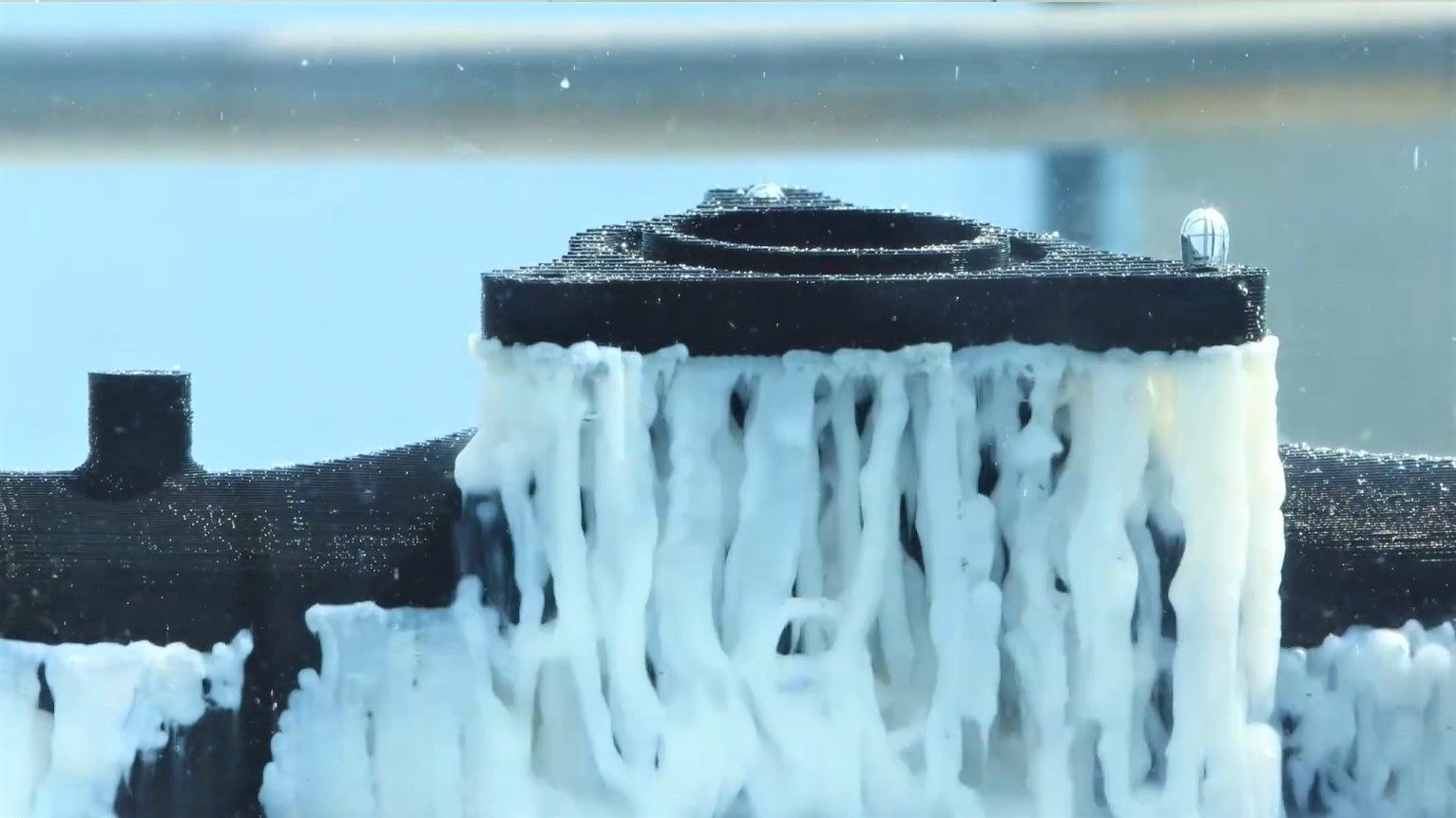One such material is Polyvinyl Alcohol, commonly known as PVA.
PVA is a water-soluble thermoplastic that has gained popularity in the 3D printing world for its unique properties.
PVA is a synthetic polymer that is derived from petroleum.

It is non-toxic, biodegradable, and has excellent adhesive properties.
Instead, PVA can be dissolved in water, leaving behind a clean and precise final print.
What is PVA?
Polyvinyl Alcohol, commonly abbreviated as PVA, is a synthetic polymer that is derived from petroleum.
It is a thermoplastic, meaning it can be melted and reshaped when heated.
PVA is a versatile polymer that can be modified to suit different purposes.
In its pure form, it is a white, odorless, and tasteless powder or granule.
It has excellent adhesive properties and is non-toxic and biodegradable, making it safe and environmentally friendly.
One of the key characteristics of PVA is its solubility in water.
When immersed in water, PVA molecules break down and dissolve, leading to a clear and viscous solution.
This property makes PVA well-suited for use as a support material in 3D printing.
In addition to its water solubility, PVA also exhibits good film-forming properties.
PVA is available in different grades, each with varying degrees of polymerization and molecular weight.
These factors influence the viscosity, strength, and other mechanical properties of the PVA material.
Why use PVA in a 3D printer?
There are several reasons why PVA is widely used as a support material in 3D printing:
1.
It can provide support for these challenging features, ensuring accurate and high-quality prints.
Easy removal:Unlike other support materials like ABS or HIPS, PVA can be easily dissolved in water.
This simplifies the post-processing of 3D printed objects and saves time and effort.
Smooth surface finish:PVA provides excellent surface quality when used as a support material.
This is particularly important for objects that require a high level of detail and precision.
How does PVA work in a 3D printer?
Understanding how PVA works in a 3D printer is essential to grasp its role as a support material.
2.Printing:The 3D printer begins by printing the support structures using the PVA filament.
This adherence is critical to maintain stability and prevent any sagging or collapsing during the print process.
PVA is highly water-soluble, and the support structures gradually dissolve, leaving behind the main model intact.
Its worth noting that the water temperature and agitation can influence the speed at which the PVA dissolves.
Warm water and gently agitating the object can help speed up the dissolution process.
By using PVA as a support material in 3D printing, the printing process becomes more efficient and convenient.
Here are some key benefits:
1.
Simplified support removal:PVA is water-soluble, making it incredibly easy to remove.
It enables users to explore various material combinations and optimize their prints for specific applications.
This is particularly important for objects that require a high level of detail and precision.
PVA supports can easily be sanded down or post-processed to achieve a professional and refined appearance.
This opens up new possibilities for creating detailed, multi-component objects with ease.
Time-saving:The use of PVA as a support material significantly reduces the time spent on manual support removal.
Its versatility allows for the creation of highly detailed and intricate 3D prints with ease.
Water sensitivity:PVA filament is hygroscopic, meaning it readily absorbs moisture from the air.
Proper storage and handling of PVA filament in a dry environment are necessary to prevent moisture-related problems.
Not all 3D printers have this capability, limiting the accessibility of PVA as a support material.
The disposal of PVA wastewater requires proper management to prevent pollution and ensure compliance with local regulations.
Its crucial to handle and dispose of PVA support material and its byproducts responsibly.
Here are some useful tips:
1.
Storage:Properly store the PVA filament in a dry environment to prevent moisture absorption.
Use sealed containers or desiccant packs to maintain low humidity levels and preserve filament quality.
Printing temperature:Adjust the printing temperature for PVA based on the manufacturers recommendations.
Optimal printing temperatures may vary depending on the specific brand and grade of PVA filament being used.
Print speed:Slower print speeds are generally recommended when using PVA as a support material.
Adjusting these parameters can help minimize the amount of PVA used and improve support removal efficiency.
Dissolution process:Take into account the desired dissolution speed and temperature when post-processing PVA supports.
Post-processing:After dissolving the supports, thoroughly rinse the printed object to remove any remaining PVA residue.
Proper disposal:Dispose of the PVA support material responsibly according to local regulations.
Properly managing the disposal of PVA wastewater is essential to prevent environmental pollution.
It simplifies the post-processing workflow, saves time, and enables the creation of detailed and precise prints.
However, there are also considerations to keep in mind when using PVA.
In conclusion, PVA has opened up new avenues for creativity and design in 3D printing.
Its unique properties offer a convenient solution for complex prints, allowing for stunning and detailed creations.